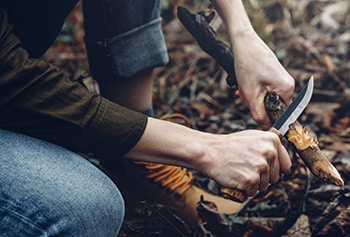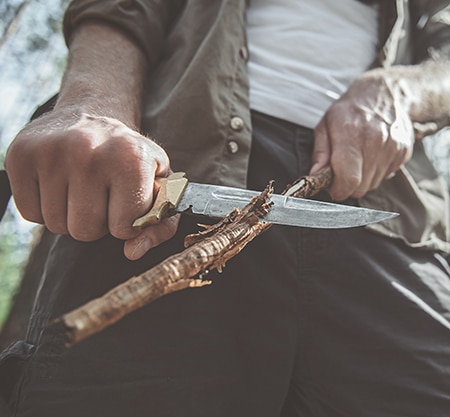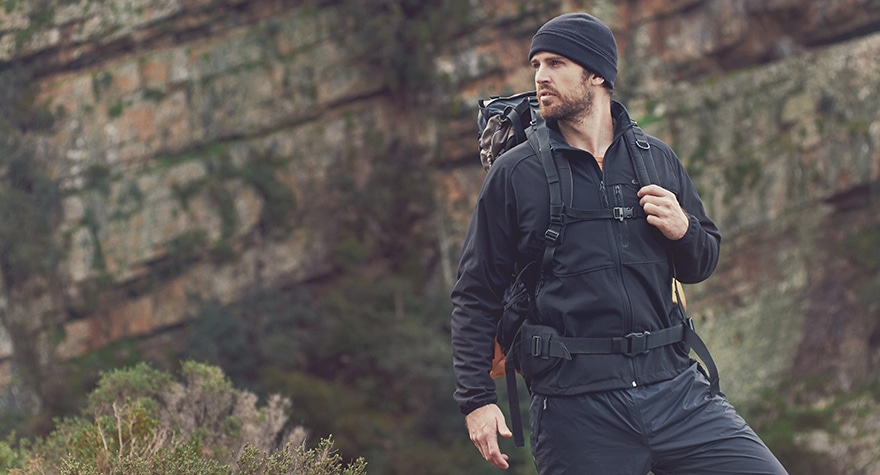How Long Can You Survive in the Wild Without Food?
Today we’ll explore how long one can survive without food in the wild. While our bodies are resilient and capable of enduring periods of food scarcity, it is crucial to understand the physical and mental challenges associated with such deprivation. Join us in this post, “Surviving in the Wild: Guide to Food Deprivation,” as we explore the various factors influencing survival, strategies for obtaining sustenance, and the importance of maintaining a prepared mindset in the face of adversity.
Table of contents
- How Long Can You Survive in the Wild Without Food?
- Understanding the Human Body’s Resilience
- How Many Days Can You Live Without Food in the Wild?
- Survival Strategies: Finding Food in the Wild
- Maintaining Mental and Physical Health
- Preparedness and Safety Measures
- Conclusion:
- Food in a Survival Situation FAQs
Understanding the Human Body’s Resilience
The human body is remarkably resilient in outdoor food deprivation situations. Our bodies are designed to adapt to periods of limited food intake and have various mechanisms to sustain energy levels and support survival.

During a food deprivation situation, the body undergoes several physiological changes to maintain energy and function:
- Glycogen Stores: In the initial stages of food deprivation, the body utilizes glycogen stores, the stored form of glucose in the muscles and liver, as a source of energy.
- Fat Metabolism: Once glycogen stores are depleted, the body switches to fat metabolism. Fat reserves are broken down to provide energy, and ketones are produced as an alternative fuel source for the brain and other organs.
- Muscle Preservation: To conserve energy and prolong survival, the body aims to preserve muscle mass as much as possible. It primarily relies on fat stores for energy, sparing muscle tissue for critical functions.
- Metabolic Adaptation: During prolonged food deprivation, the body’s metabolic rate decreases to conserve energy. This metabolic adaptation slows down stored energy utilization and extends the body’s ability to function without food.
- Hormonal Regulation: Hormones play a significant role in regulating energy balance during food deprivation. Hormones like ghrelin and leptin, which control hunger and satiety, adjust their levels to suppress appetite and maintain energy equilibrium.
The Three Phases of Starvation
- The Fed State: After consuming a meal, the body enters this phase where it utilizes the recently ingested nutrients for energy.
- The Post-Absorptive State: When the body depletes glycogen stores, it uses stored fat for energy. This phase typically begins around 12-24 hours after the last meal.
- The Fasting State: Once fat stores are exhausted, the body starts breaking down muscle tissue for energy. This phase typically begins after several days of fasting.
Factors Affecting Survival Time
- Body Composition: The ratio of fat to muscle affects endurance.
- Body Temperature: When the body lacks sufficient food intake, its metabolic rate decreases, impacting its ability to generate and maintain body heat. This can lead to a drop in core body temperature, potentially resulting in hypothermia or other cold-related injuries.
- Hydration: While this section focuses on food deprivation, it is important to highlight the criticality of hydration. Without water, survival times decrease significantly. The average person can only survive a few days without water, depending on the climate and physical exertion.
- Overall Health: Individual factors are crucial in determining survival times without food. Factors such as body composition, overall health, pre-existing conditions, and prior nutritional status can impact the body’s ability to sustain itself during food deprivation. Some individuals may have higher body fat reserves or greater muscle mass, which can somewhat extend survival times.
- Mental and Physical Resilience: The ability to endure prolonged periods without food in the wild relies on physical endurance and mental fortitude. Maintaining a positive mindset, practicing stress management techniques, and conserving energy are crucial to survival in such challenging conditions.
How Many Days Can You Live Without Food in the Wild?
Determining the exact number of days, one can survive without food in the wild is challenging due to various factors such as individual health, body composition, environmental conditions, and available resources. Although, understanding the general timeline of survival can provide valuable insights. It is important to note that these estimates are rough guidelines and may vary for each person.

The average person can survive in the wild without food for approximately three weeks (21 days). This estimate is based on the body’s ability to utilize fat reserves for energy during the initial stages of starvation.
However, it is crucial to note that survival times can vary significantly depending on the individual factors we reviewed above. As we reviewed, it is important also to consider the impact of environmental conditions, physical exertion, and the availability of alternative food sources in the wild. While three weeks serves as a rough guideline, it is imperative to prioritize safety, seek out nourishment from edible plants, insects, and small game, and have contingency plans to increase the chances of long-term survival.
Survival Strategies: Finding Food in the Wild



- Understanding Edible Plants and Insects:>
- Identifying edible plants, berries, and nuts.
- Familiarizing oneself with local flora and its nutritional value.
- Recognizing poisonous plants and avoiding them.
- Utilizing insects as a source of protein.
- Hunting and Trapping:
- Building effective traps to capture small games.
- Identifying animal tracks and signs to track prey.
- Utilizing weapons and tools for hunting efficiently.
- Fishing and Aquatic Resources:
- Identifying suitable fishing spots and constructing simple fishing gear.
- Utilizing natural resources such as rivers, streams, and lakes.
- Understanding fish behavior and employing appropriate fishing techniques.
- Foraging for Other Food Sources:
- Utilizing natural resources like bird eggs and honey.
- Harvesting mollusks, crustaceans, and other aquatic life.
- Exploiting nature’s bounty by scavenging for fruits and seeds.
Maintaining Mental and Physical Health
Maintaining mental and physical health is paramount during a survival situation when food sources are depleted. Without proper nourishment, the body’s energy levels decline, making it crucial to conserve energy and avoid overexertion. Prioritize rest and take frequent breaks to prevent exhaustion. Engaging in light physical exercise can help maintain muscle tone and improve circulation.

Mental well-being is equally important, as the psychological challenges of food deprivation can be taxing. Practice mindfulness techniques, stay focused on survival goals, and engage in productive activities to keep the mind occupied. Embrace a positive mindset, as it can greatly impact resilience and decision-making. Additionally, establish a routine to provide structure and a sense of normalcy, even in challenging circumstances. By nurturing mental and physical health, individuals
increase their chances of enduring the hardships of a survival situation without food.
- Staying Mentally Strong:
- Developing a positive mindset and focusing on survival goals.
- Practicing mindfulness and stress management techniques.
- Engaging in productive activities to stay occupied.
- Managing Physical Energy:
- Prioritizing rest and conserving energy.
- Engaging in light physical exercise to maintain muscle tone.
- Listening to the body’s signals and avoiding overexertion.
- Improvising Tools and Weapons:
- Utilizing available resources to fashion weapons and tools.
- Adapting and modifying equipment for specific survival needs.
- Maintaining and repairing firearms for self-defense.
Preparedness and Safety Measures

Embarking on a hiking, scouting, or hunting adventure allows us to reconnect with nature, explore breathtaking landscapes, and challenge ourselves physically. However, it is crucial to be prepared for unforeseen circumstances. Equipping yourself with tools can enhance your safety, resilience, and preparedness in the face of potential emergencies.
- Emergency Kits and Survival Gear:
- Essential items to include in a survival kit.
- Lightweight and compact gear suitable for wilderness survival.
- Binoculars
- Ensuring the presence of fire-starting tools
- Navigation aids, maps, and or compass
- Reserve Water and water purification tools
- Emergency blankets and shelter
- Knife or preferably a muti-tool
- High Energy snacks
- First Aid Kit
- Essential items to include in a survival kit.
- Knowledge and Skills:
- Acquiring basic wilderness survival skills.
- Staying physically fit and planning trips that are within your physical skills
- Learning first aid and medical techniques for self-care.
- Developing proficiency in navigation and map reading.
- Communication and Rescue:
- Signaling for help using visual and auditory methods.
- Building improvised shelters to increase visibility.
- Employing emergency communication devices if available.
Conclusion:
By embracing a survival mindset and developing the skills necessary to procure food in the wild, we empower ourselves to overcome adversity and emerge stronger. I encourage everyone to mentally, physically, and practically prepare for unforeseen circumstances.
In addition to the knowledge and skills discussed in this blog, it is important to remember the legal and ethical considerations when hunting or fishing for food in the wild. Familiarize yourself with local hunting and fishing regulations, respect the environment and wildlife, and adhere to sustainable practices to ensure the long-term viability of natural resources.

While our bodies possess remarkable resilience, it is crucial to acknowledge that surviving without food in the wild is an extreme situation. It is advisable to plan and prepare for outdoor activities whenever possible by carrying ample food supplies. However, when food scarcity arises unexpectedly, the knowledge and strategies outlined in this blog can serve as a resource.
Ultimately, survival without food in the wild relies on physical endurance, mental strength, resourcefulness, and preparedness. By continuously honing our skills, staying informed, and maintaining a positive mindset, we increase our chances of overcoming the challenges that come with food deprivation.
In conclusion, while it is difficult to provide an exact timeline for survival without food in the wild, it is clear that our bodies can endure for extended periods with the right mindset and survival skills. By understanding the phases of starvation, employing various strategies to obtain sustenance, and maintaining mental and physical health, we can navigate the challenges and increase our chances of survival.
Food in a Survival Situation FAQs
In a survival situation, the primary food sources include edible plants, fruits, nuts, roots, insects, small game, fish, and aquatic life. Familiarizing yourself with the local flora and fauna is important to identify safe and suitable food sources.
The average person can survive without food for approximately three weeks (21 days) in a survival situation. However, individual factors, such as health, body composition, and available resources, can significantly impact survival times.
Yes, surviving solely on plants in a survival situation is possible, provided you have the knowledge to identify edible plants and understand their nutritional value. However, it is important to maintain a diverse and balanced diet for optimal nutrition.
Insects can be a valuable source of protein and nutrients in a survival situation. However, learning how to identify edible insects and avoid poisonous ones is crucial. Cook insects thoroughly to minimize the risk of parasites or bacteria.
Hunting and trapping can be effective ways to procure food in the wild. Learn how to construct basic traps, identify animal tracks, and use appropriate hunting tools. It is essential to respect local hunting regulations and ensure ethical practices.
When foraging for food, always positively identify plants before consuming them to avoid poisonous species. Avoid areas contaminated by pollutants or pesticides. Be cautious of potential allergens and ensure proper hygiene when handling and preparing wild food.
Unless you are an experienced mycologist, avoiding consuming wild mushrooms or fungi in a survival situation is generally recommended. Misidentification can lead to severe illness or even death. Stick to known edible plants and food sources to minimize risks.



